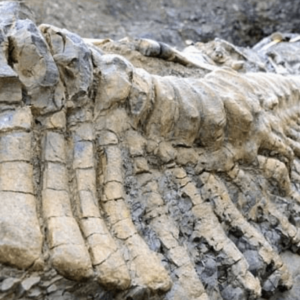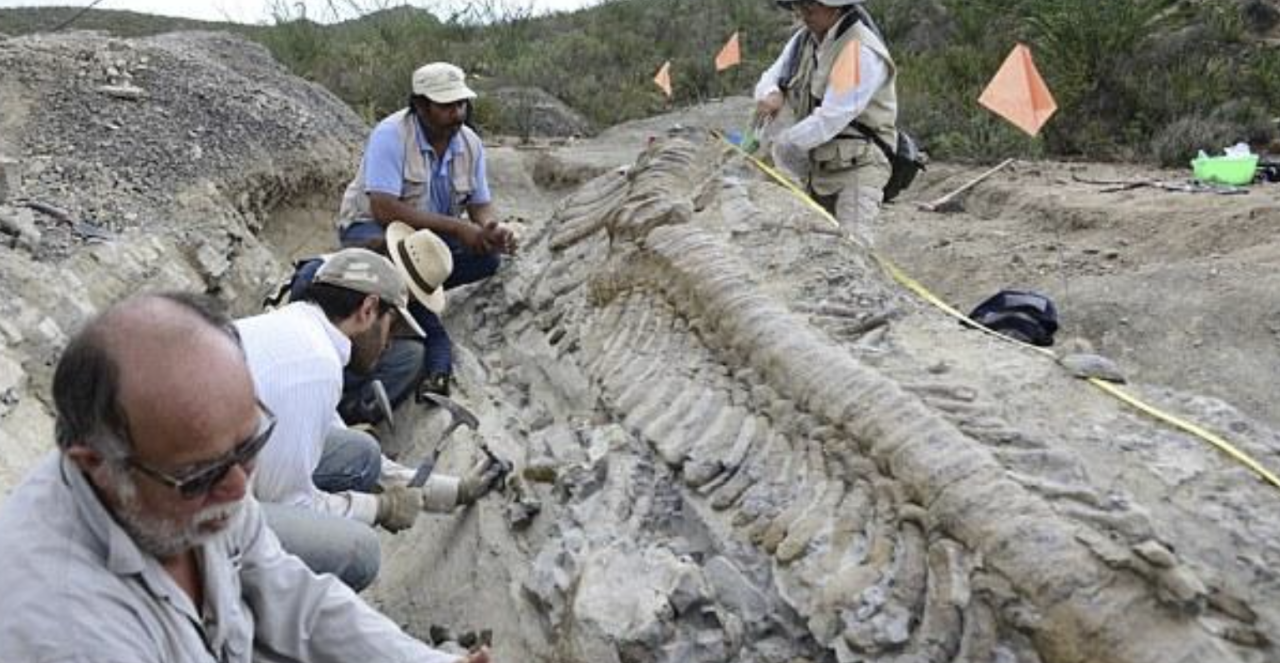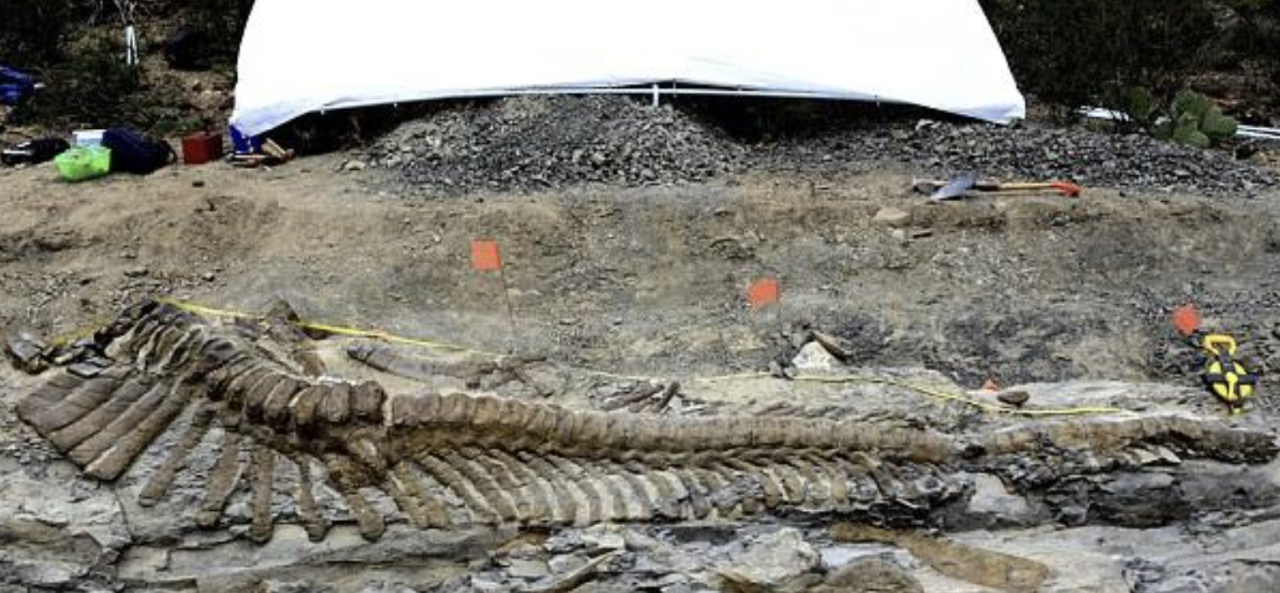A team of archaeologists has discovered the fossilized remains of a 72-million-year-old dinosaur tail in a desert in northern Mexico, it has been announced.
The ‘unusually well-preserved’ five-yard-long tail is the first ever found in Mexico, said Francisco Aguilar, director of the country’s National Institute of Anthropology and History (INAH).
The team, made up of archaeologists and students from INAH and the National Autonomous University of Mexico (UNAM), identified the fossil as belonging to a hadrosaur, or duck-billed dinosaur.
The ‘unusually well-preserved’ five-yard-long tail is the first ever found in Mexico. It is 72 million years old.

Archaeologists have uncovered a remarkable fossilized dinosaur tail near the small town of General Cepeda, situated in the border state of Coahuila. The tail, which likely represents half the dinosaur’s length, was found buried in sedimentary rock. Agulair, a prominent researcher, noted that the complete tail measures about 50 vertebrae in length.

The fossil was discovered after a painstaking 20-day excavation process in the desert, during which researchers slowly removed the sedimentary rock covering the bones of the ancient creature. In addition to the tail, other fossilized bones were found in the surrounding area, including one of the dinosaur’s hip bones, as reported by INAH (National Institute of Anthropology and History).
The discovery offers valuable insights into the anatomy of this dinosaur species and the paleoenvironment of the region.

The tail, from a hadrosaur, will enable experts to learn about bone conditions that affected these colossal beasts.
Despite Mexico’s rich heritage in paleontology, this is the first dinosaur tail found in the country.

The hay scattered around the tail included other fossilized bones, including one of the dinosaur’s hips.
Finds of dinosaur tails are relatively rare, according to experts.
The new discovery could improve understanding of the Hadrosaur family and aid research into diseases that affected dinosaur bones, which resemble those of humans, Agüilar said.
Scientists have already determined that dinosaurs suffered from tumors and arthritis, for example.
Dinosaur remains have been found in many parts of the state of Coahuila, as well as in other desert states in northern Mexico.
‘We have a very rich history of paleontology,’ Agüilar said.
He noted that during the Cretaceous period, which ended about 65 million years ago, much of what is now central and northern Mexico was on the coast.
This has allowed researchers to unearth remains of both marine and terrestrial dinosaurs.
The presence of these remains was reported to INAH by locals in June 2012. After the first inspections, excavations began at the beginning of this month. The remains of the tail will be transferred to General Cepeda for cleaning and further investigation.
An artistic recreation provided by the National Geographic Society shows what a hadrosaur is believed to have looked like. Most dinosaur groups, except hadrosaurs and ceratopsids, were in decline during the last 40 million years of the Cretaceous.




